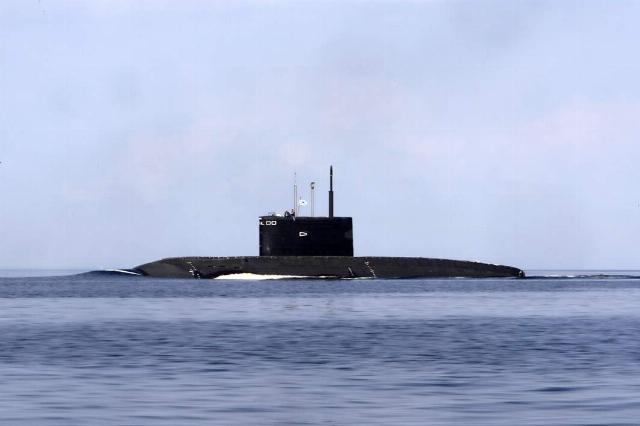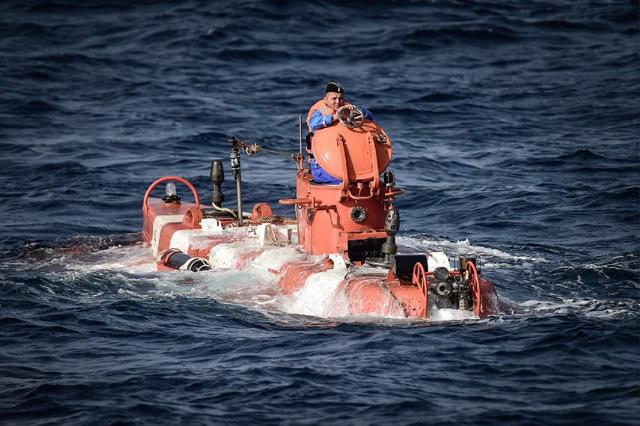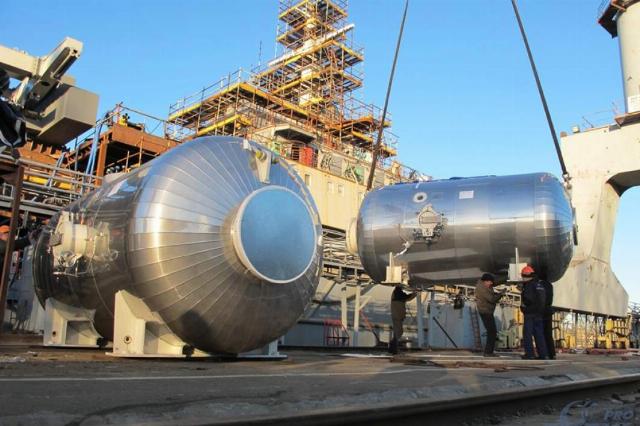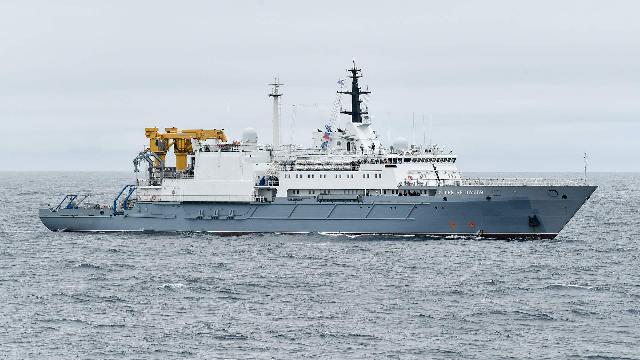The sailors were lifted to the surface from a submarine lying at a depth of 80 meters.
In the Sea of Japan, exercises were held to rescue the crew from aboard a submarine lying on the ground at a depth of 80 meters. The rescue vessel Igor Belousov, which has no analogues in the Russian navy, was involved in it. The autonomous vehicle "AS-40" was launched, which docked to the submarine "Magadan" and the submariners were brought on board. Each such operation is unique and inimitable and requires the ability to think outside the box, experts say.
How did the submarine rescue exercises go?
In Peter the Great Bay, the crew of the Igor Belousov rescue vessel of the Pacific Fleet rescue squadron conducted exercises to assist and withdraw the crew of the Magadan submarine, the Russian Defense Ministry said on Monday.
According to the plan of the exercise, the Magadan diesel-electric submarine landed on the ground at a depth of about 80 meters as a result of an emergency situation on board.

Magadan diesel-electric submarine
Image source: Photo: RIA Novosti
On alert, a marine tugboat and the rescue vessel Igor Belousov moved into the search area. With the help of the autonomous uninhabited Panther spacecraft, a conditionally emergency submarine was detected. The AS-40 autonomous vehicle was launched, which supplied air, technical fluids and power to the ship. The vehicle docked to the submarine's coaming area, after which the hatches were opened and part of the crew left the boat's hull dry on board the autonomous vehicle, after which the submariners were lifted to the surface.
An outpatient clinic with all necessary medical equipment was deployed on board the rescue vessel Andrey Belousov, as well as the deep-sea diving complex GVK-450 Dolphin-GVK with five pressure chambers.
"Any underwater operation, especially related to the rescue of personnel or assistance to an emergency ship, including the inspection of an object lying on the ground, always presents a unique and unique special task," Rear Admiral Vsevolod Khmyrov, a former submarine commander, told Izvestia. — The importance of conducting such exercises cannot be overestimated. What matters is not what kind of situation is being modeled, but that in any such situation, the personnel's ability to operate systems capable of providing assistance is being tested. And most importantly, submariners who assist an object underwater develop the ability to think in an unusual or, if you will, creative way. And this is a very serious task every time.
The most dangerous aggressive environment for humans is water, the rear admiral added.

Autonomous deep-sea vehicle AC-40
Image source: Photo: TASS/Yuri Smityuk
— There is no more aggressive effect on the human body or any object than exposure to water. The uniqueness lies in the danger and difficulty of working with pressure resistance, the lack of clear lighting and low visibility. Hence the complexity of communication," he concluded.
 |
| The rescue vessel Igor Belousov and the autonomous vehicle AS-40. |
| Source: iz.ru |
Due to the fact that at one time we did not have such a degree of readiness of rescue services, tragedies occurred, in particular, with the Kursk submarine, Admiral Sergey Avakyants, ex-commander of the Pacific Fleet, told Izvestia.
"Such exercises are conducted on a regular basis," he explained. — This is not some kind of event on a case-by-case basis, but a whole system of preparation. At the moment, the Pacific Fleet is armed with the most modern rescue vessels equipped with the most modern rescue equipment. The practical skills of the Pacific Fleet rescuers are constantly being maintained.

Igor Belousov rescue vessel in the Vostochny Bosphorus Strait
Image source: Photo: TASS/Yuri Smityuk
— When there was an accident with the Kursk, we did not have such trained divers at that time, so we had to invite foreign specialists to lift the submarine. And now we have unique specialists," concluded Sergey Avakyants.
What are the capabilities of the Igor Belousov rescue vessel
The Igor Belousov ocean-class rescue vessel is unique in its capabilities. It is designed to rescue the crews of ships and submarines in distress. It was built according to the 21300C Dolphin project, developed by the Almaz Design Bureau. The ship was named after the famous Soviet shipbuilder and Minister of the Shipbuilding Industry of the USSR Igor Sergeevich Belousov.
The vessel can not only evacuate the crew of an emergency submarine, but also organize the supply of air, electricity and rescue equipment on board. With the help of inhabited and uninhabited underwater vehicles, Dolphin is able to search and inspect emergency facilities.

Installation of residential pressure chambers of the deep-sea diving complex GVK-450 "Dolphin-GVK" on the vessel "Igor Belousov". November 2013
Image source: Photo: Tethys Pro
The basis of the ship's rescue equipment is the GVK—450 deep-sea diving complex. It can dive to a depth of 450 m and lift sailors from an emergency submarine to the surface, providing decompression in pressure chambers simultaneously to 60 submariners in five pressure chambers. Belousov also carries the AS-40 deep-sea rescue underwater vehicle (Bester-1), capable of operating at depths up to 720 m.
As part of the development of GVK-450, diving descents to depths of up to 120 m were carried out in the spring of 2017, and in October of the same year, a dive to 317 m took place with access to the ground in the waters of the Pacific Fleet deep-sea landfill. In the fall of 2018, three Russian divers planted the Russian flag in the Sea of Japan at a depth of 416 m. This action has become a record for diving in gear. At the same time, they conducted a training session on connecting air supply hoses to a conditionally emergency submarine.
The task of building special vessels for the Russian Navy to rescue crews of emergency submarines lying on the ground or in a surface position was set for domestic shipbuilders immediately after the tragedy of the Kursk nuclear submarine in August 2000. The contract for the construction of the first vessel of the series was signed in 2004. Due to the large number of innovations applied, the fine-tuning of the vessel was delayed. The ship joined the fleet only in 2015.
Roman Kretsul

